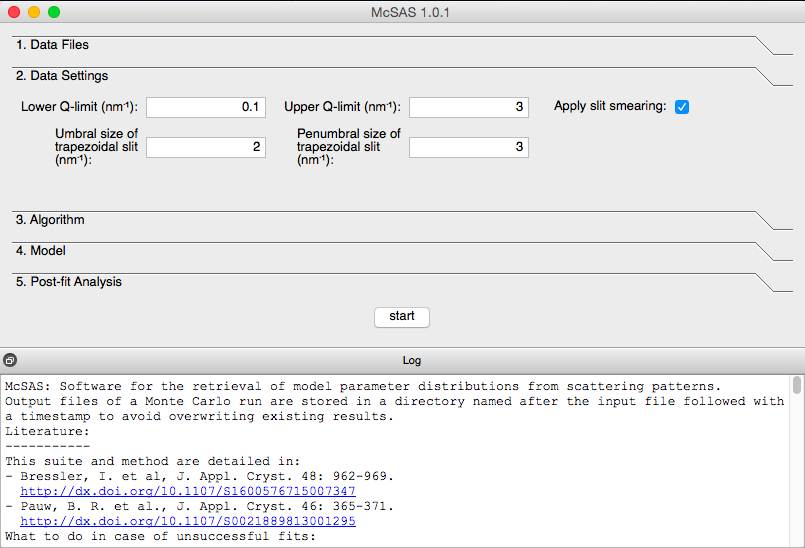
[note: The commenting system appears to be broken for now. Comments can be e-mailed to me for inclusion below. Sorry for the inconvenience while I work on a fix]
Tomorrow, I will be giving a talk at the PTB (at BESSY), rendering my time rather limited. To give you something to tide over the week until the next post, however, let me tell you a little about the upcoming feature of McSAS: slit-smearing.
SAXS instruments are generally divided into three classes: pinhole-collimated instruments, slit-collimated instruments and crystal-collimated instruments. The pinhole-collimated instruments has a relatively low X-ray flux, but can deliver data without too many corrections. These instruments are also the most useful for position-resolved measurements and measurements on anisotropic samples (typically samples after processing).
The slit-collimated instrument sought to improve the flux by collimating only in one direction, drastically simplifying the instrument at the same time. The lack of collimation in the direction perpendicular to the measurement meant that a correction was necessary: a “desmearing” procedure was to be performed. This procedure is similar to the “sharpening” process in image manipulation, but has some issues. The biggest issue is that the benefits of the increased flux are offset by the noise amplification effected by the desmearing procedure (as investigated here). Desmearing is also a mathematically complex procedure with the potential to lead to artifacts or overly smooth data.
Apropos, the third class of instruments, crystal-collimated instruments can be either collimated in two directions, as suggested by Bonse and Hart, or in one direction only. The latter is more practical (requiring fewer crystal alignments) and therefore the more common variant of this uncommon class, but requires desmearing as well.
The safer, much easier direction to handle this problem is to smear your model (similar to a “Blur” in image manipulation), instead of desmearing your data. This is already the recommended route to handle resolution effects in neutron scattering, but X-ray scatterers have been a bit slow to catch on.
To make it easier, we have started implementing this in McSAS. At the moment, this only supports slit-smearing, but will be extended to include beam smearing in pinhole-collimated instruments. Initial results show that this smearing step is not a big performance hit for simple models.
When the implementation is nearing completion, I will write another post with some more details and examples. Until then, here is a screenshot to tide you over:


Leave a Reply